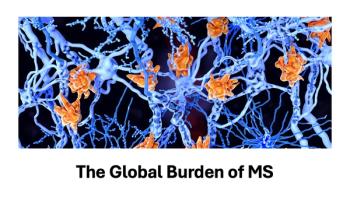
Harassment Investigation Protocol: 10 Upgrades Health Organizations Should Make
Here are 10 important issues to consider when handling workplace harassment complaints.
In every situation, employers are responsible for conducting prompt, thorough, and objective investigations when an employee complains of discrimination, harassment, or retaliation in the workplace. Investigations are helpful to address any harassment claims and to substantiate that an employment decision was given careful consideration prior to being made. This is especially true in sensitive workplace situations in the healthcare industry, where management and HR may have to handle a myriad of complaints from patients and staff. Mismanagement can be costly-resulting in lawsuits and irreparable harm to reputations. Here are 10 important issues to consider when handling workplace harassment complaints.
1. Maintain effective complaint procedures.
Critically assess your complaint mechanisms to ensure they are working properly. Policies should provide several complaint avenues; inform employees that once a complaint is received, a timely and objective investigation will commence, and assure them that confidentiality will be maintained to the extent possible. Let employees know they will not be retaliated against for making a complaint, and encourage them to immediately report any retaliation. And importantly, supervisors must be trained to ensure the company’s policies and procedures are enforced.
2. Identify when to launch an investigation.
Sometimes employees make a complaint but maintain that they want to handle the situation on their own or keep it confidential. It is imperative that supervisors know to report all complaints to human resources immediately regardless of any employee requests to the contrary. Managers should never promise complete confidentiality. If an investigation is deemed necessary, it should occur regardless of whether the complainant wants to participate. Most importantly, decisions on whether to commence an investigation should not be influenced by the accused’s status within the organization.
3. Avoid too much delay.
Delays may occur due to vacation schedules or other unavoidable reasons. Always document the reasons why a delay occurred and what was done to address it and communicate these reasons to the employee. Generally, however, an investigation should commence within days of the complaint.
4. Remember the guidelines.
The Equal Employment Opportunity Commission (EEOC) has guidelines for conducting effective harassment workplace investigations. This guidance is available on its website at
5. Take timely remedial measures.
Immediately after receiving the complaint, decide whether there are any remedial measures you need to take. For example, do you need to separate the complaining employee from the alleged harasser? Should the alleged harasser be placed on administrative leave pending the investigation? These types of considerations should be top of mind from the beginning of the investigation to completion.
6. Interview all witnesses identified by the accused.
The investigation must be unbiased and evidence must be collected from all sides. The accused must have an opportunity to tell their side of the story, and interviewing all witnesses identified by the accused is helpful to show the investigation was fair.
7. Retain adequate documentation.
Keep in mind that the adequacy of the investigation may one day be examined at trial in front of a jury. Statements, notes, and other communications need to be retained in a confidential file. Credibility determinations based on demeanor, inconsistencies and other factors should be documented. If phone records are relevant, they should be requested, reviewed, and stored in the investigation file. Similarly, if the accuser or accused fails to cooperate in providing this information, that should also be noted. Documentation is critical in investigations when defending against future lawsuits.
8. Investigate nonemployee issues.
Nonemployees may lodge complaints of harassment against the company’s employees. Similarly, employees may lodge complaints of harassment against these third parties. Generally, the company has an obligation to ensure a harassment-free work environment in these situations and may need to conduct an investigation even when involving nonemployees.
9. Retain outside investigators.
When an investigation involves a high-level executive or third party, consider retaining an outside investigator to conduct the investigation. Attorney and nonattorney investigators alike specialize in workplace harassment investigations, but before hiring one, you should vet them to ensure they are competent to handle the type of investigation you need. One critical question you should answer is whether you might want to keep the investigation privileged; if so, hiring an attorney investigator is the way to go.
10. Consider allowing third-party participation.
Employees represented by a union are generally allowed to have a union representative present at an investigatory interview. Employees not represented by a union are generally not allowed to have a representative present. However, even if the employee is not allowed to have a representative present, from a strategic vantage point, it may be better to allow their attorney to be present during the interview.
In addition to the above, there are many other considerations at play in workplace investigations. Given the rising amount of such complaints, it is important for human resources and others involved in this process to carefully consider the game plan for each and every complaint received.
David Amaya is a partner in the San Diego, CA, office of labor and employment law firm Fisher Phillips. He can be reached at
Newsletter
Get the latest industry news, event updates, and more from Managed healthcare Executive.






















































